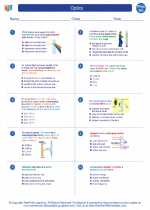Tropical Cyclones
A tropical cyclone is a rapidly rotating storm system characterized by a low-pressure center, a closed low-level atmospheric circulation, strong winds, and a spiral arrangement of thunderstorms that produce heavy rain. These storms are known by different names in different regions, such as hurricanes in the Atlantic and northeastern Pacific, typhoons in the northwestern Pacific, and cyclones in the South Pacific and Indian Ocean.
Formation and Structure
Tropical cyclones form over warm ocean waters near the equator. They require sea surface temperatures of at least 26.5 degrees Celsius to form and strengthen. As the warm, moist air over the ocean rises, it creates an area of low pressure beneath it. This sets off a chain reaction of air being pulled in to replace the rising air, leading to the formation of a rotating system of clouds and thunderstorms.
The structure of a tropical cyclone includes an eye at the center, surrounded by the eyewall where the strongest winds and heaviest rainfall occur. The entire system is encircled by bands of rain and thunderstorms.
Impact and Hazards
Tropical cyclones can cause widespread destruction through heavy rainfall, storm surges, and powerful winds. The heavy rainfall can lead to flooding and landslides, while storm surges can inundate coastal areas, causing significant damage to infrastructure and posing a threat to human life. The strong winds can also cause widespread damage to buildings, trees, and power lines.
Monitoring and Forecasting
Tropical cyclones are monitored using satellite imagery, radar systems, and weather buoys. Forecasting the track and intensity of tropical cyclones involves complex computer models that take into account numerous atmospheric and oceanic variables. Early warning systems are crucial for minimizing the impact of these storms on coastal communities.
Study Guide
- Describe the conditions necessary for the formation of a tropical cyclone.
- Explain the structure of a tropical cyclone, including the characteristics of the eye and eyewall.
- Discuss the potential impact and hazards associated with tropical cyclones.
- Examine the methods used to monitor and forecast tropical cyclones.
- Compare and contrast the terminology used for tropical cyclones in different regions of the world.
Understanding tropical cyclones is crucial for anyone living in or studying about regions prone to these powerful storms. Stay safe and be prepared!



